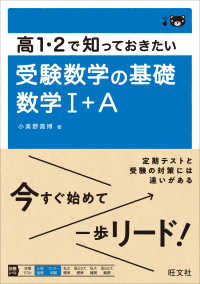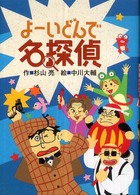- ホーム
- > 洋書
- > 英文書
- > Politics / International Relations
Full Description
1994 marked a seminal point in the Irish peace process. The IRA and the Combined Loyalist Military Command had just announced their ceasefires. This was the new beginning - or so it seemed. Much has happened since, both good and bad. The original IRA ceasefire was blown away by the London Docklands bomb explosion in February 1996. The loyalists killed again, and the largest of the paramilitary organizations in this community - the Ulster Defence Association - became an enemy of the peace process. This is a group now steeped in drugs crime and linked to sectarian murder. The most prominent and probably the most feared of its leaders, the Belfast loyalist Johnny Adair, has twice been thrown back into jail since the Good Friday Agreement and remains there today, deserted by his own. Amid the fog of all that has been bad, much progress has been hidden. The IRA restored its ceasefire. From the defiant writing on the wall, which shouted out "not a bullet - not an ounce", it has moved to put some of its arms beyond use and the republican "hawk" Martin McGuinness has travelled from the table of the IRA Army Council to the seat of government in Belfast.Some on the loyalist side have also grown into the new politics of peace. David Ervine and Billy Hutchinson - one-time members of the UVF and prisoners in Northern Ireland's past - are now part of the political mainstream. They have given a new and progressive voice to loyalism. In "The Armed Peace", Brian Rowan looks at life and death after the ceasefires. He examines the armed peace, the struggle between guns and government and the intelligence war during which the IRA ventured behind enemy lines. Long after 1994, the spooks, the spies and the IRA's director of intelligence were still at play. Rowan writes on his contacts with the IRA's "P O'Neill" and uses his republican, loyalist and security sources to tell the inside story of the ceasefires and Northern Ireland's long journey from war towards peace.








